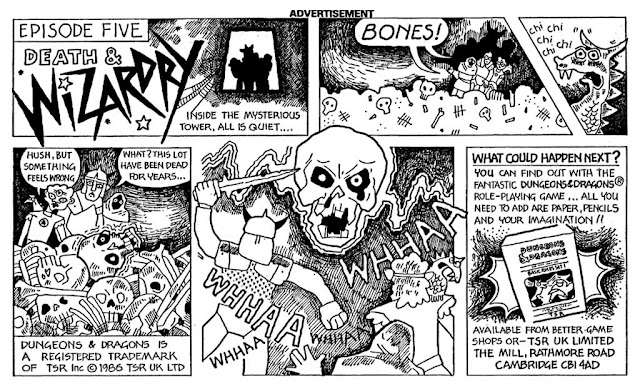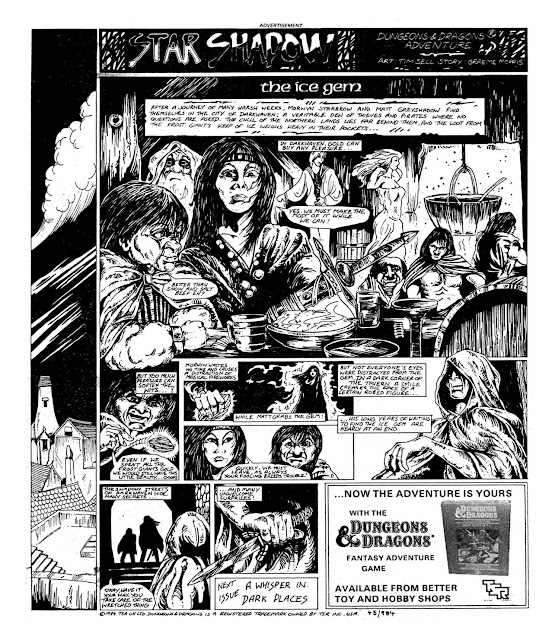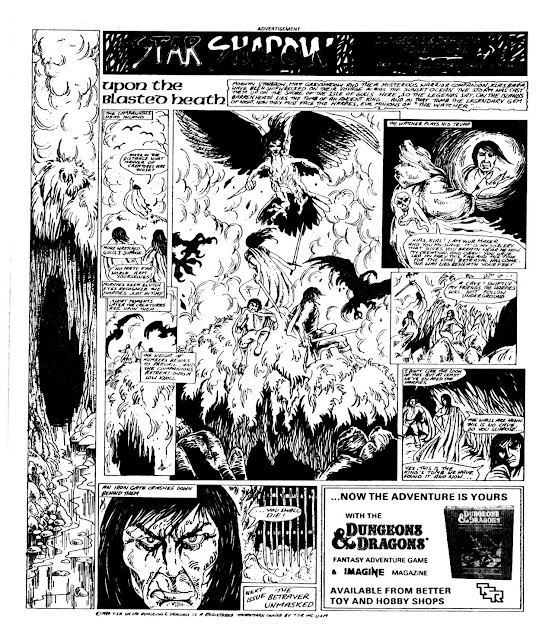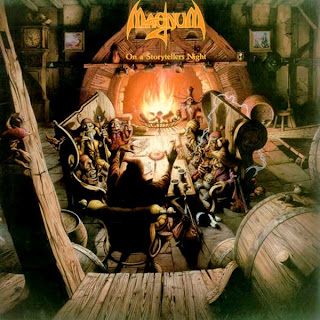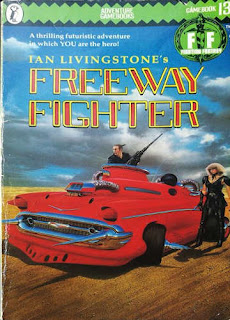One of the biggest exponents of this were Games Workshop who suddenly went from publishing bookshelf sized boardgames to making huge boxes full of tons of plastic miniatures. As you can see in the photo below these things were larger in every dimension and made sure that GW games dominated over their rivals for valuable gamestore shelf space.
 |
| Large Box game vs Bookshelf sized game - a storage nightmare |
Released in 1988, Adeptus Titanicus, introduced the EPIC 6mm scale to the Warhammer 40K world. It allowed you to create massive micro-armour legions of Space Marines, Eldar, Orks and Chaos and have them fight it out in traditional miniature wargaming style.
 |
| Adeptus Titanicus - buy it on eBay |
Some neat expanded polystyrene apartment block structures were included in attempt to create some line of sight blocking terrain but these were largely redundant. Also included were infantry and mobile armour which were later supported in the "Epic" range of 6mm miniatures. This should have been a slam dunk success as you could build huge forces for not a lot of outlay. Sadly like a lot of the games you are going to see in this list they ulitmately fell out of favour and GW moved on.
Like many of the big box games it came badged with the "3D Roleplay" logo, but there were no roleplay elements in it, nor did it have the finessed boardgame play of the vastly superior Battletech.
Dark Future (1988)
I'd always been a fan of the Mad Max movies and Steve Jackson Car Wars game, so when GW announced that their future release Dark Future was an attempt to upscale the action to 1/72nd "matchbox" scale, I snapped it up.
 |
| Games Workshop Dark Future - Buy Dark Future on eBay |
The theory was that in the post apocalyptic "Dark Future", vehicular highway battles between the corporate good guys driving sleek "Interceptors" and the highway outlaws driving makeshift "Renegade" buggies would be a daily occurrence. The game included 2 cars of each variety which you could customise by adding an array of plastic weapons to the models built in hardpoints, in a similar style to Adeptus Titanicus. The rest of the game game was essentially a series of cardboard curves, straights, tokens and some bikes.
My recollections of the game was that it was a bit of a drag, mostly due to the phase system which although shorter than Car Wars, was still ponderous. This is something I will be reacquainting myself with in the very near future, thanks to eBay, as I try to find the perfect blend of rules for my post apocalyptic road-racing game project.
Bloodbowl 2nd Edition (1988)
A large box was always going to be necessary to contain the huge three part expanded polystyrene "Astrogranite" playfield and clutch of plastic ork and human player miniatures. This was a vast improvement on the jigsaw style board and cardboard standees of the original bookshelf game published two years earlier.
 |
| Blood Bowl 2nd Edition - Buy it on eBay |
The low cost of putting together a team of maybe a dozen or so starplayers in addition to your plastic blockers compared to that of most other miniature games was a pretty attractive selling point for cash strapped gamers like myself. Just blogging about it makes me want to play it. I'm sure I have a Dwarven Deathroller miniature around here somewhere...
Advanced Heroquest (1989)
In 1989 Milton Bradley (in collaboration with Games Workshop) released the dungeon crawl boardgame Heroquest. It was very successful and Games Workshop almost simultaneously released an advanced version.
 |
| Advanced Heroquest (cos basic just isn't enough) - Buy it on eBay |
This version eschewed the traditional folded board for a modular jigsaw style collection of rooms and corridors which you could connect together in different layouts as you progressed through the various scenarios. A serviceable set of plastic hero and monster miniatures were included with all the stats necessary to play out your own little dungeon adventure game.
As can be seen from the box art the now familiar "3D Roleplay" is present and for the first time, GW actually delivered a game with a strong roleplay element to it. Also featured is the "Solo Play" logo which meant that lone gamers could enjoy the Warhammer Fantasy universe as well. The rules were also a significant step up from the original and allowed simple character progression and monsters were backwards compatible with the MB Boardgame.
Space Hulk (1989)
Set in the Wharhammer 40K universe, Space Hulk pits space marines in "Terminator" armour against a new enemy, the Genestealers, as they explored massive derelict spaceships.
 |
| Space Hulk - Buy it on eBay |
Essentially a sci-fi version of Heroquest with very well executed and very repurposeable jigsaw floortiles. The miniatures were made of the same brittle type of plastic used in Adeptus Titanicus and Dark Future rather than the slightly more flexible stuff used for minis in Advanced Heroquest and were adequate sculpts. The game however was slick, fun and immensely challenging.
I like many of my age, I'm sure, totally raided my copy for sci-fi floorplans and the minis which ended up in other boxes never to be seen again. Ebay, to the rescue perhaps...





